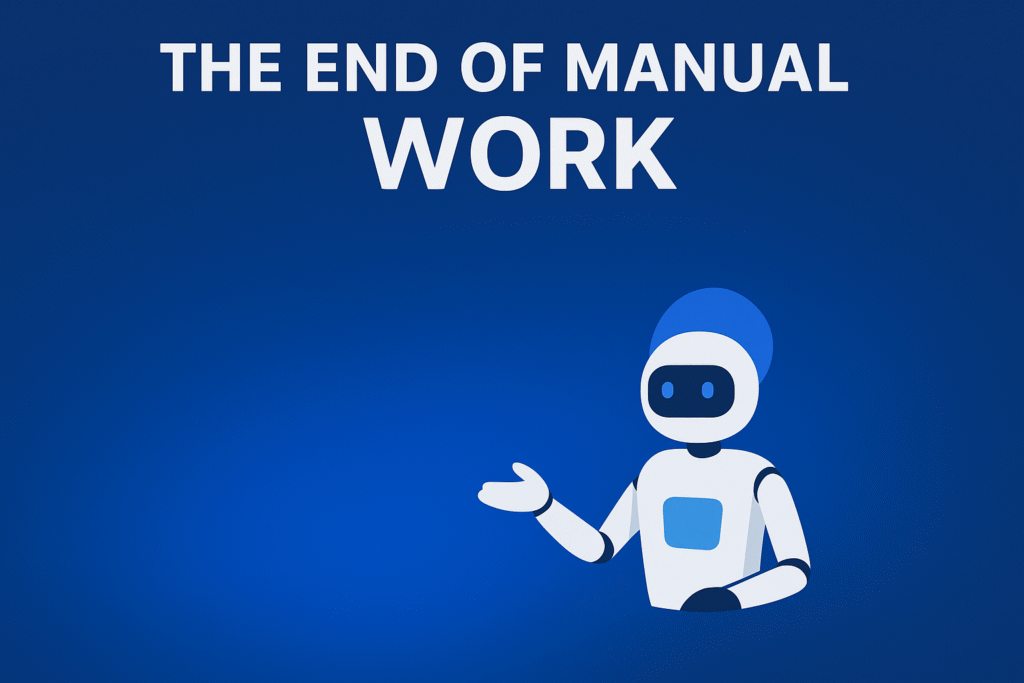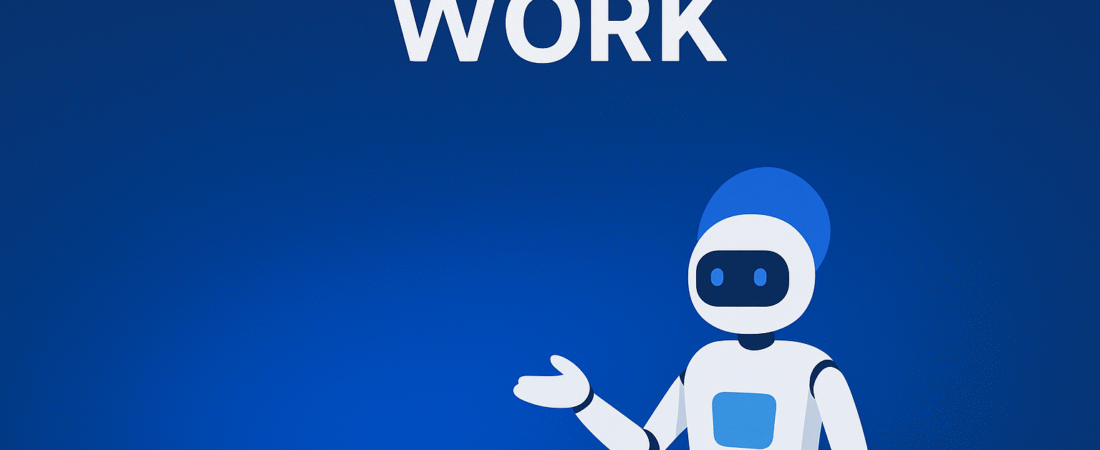
The End of Manual Work 2025: How AI Workflows Run Modern Businesses
Introduction: The Silent Revolution Behind Every Click
Some revolutions happen with headlines. Others happen quietly, line by line, workflow by workflow.
In 2025, the AI revolution isn’t loud. It’s silent, invisible, and running behind the scenes of nearly every modern business.
When I began testing automation systems a few years ago, I expected simple efficiency gains. What I didn’t expect was this: AI wasn’t just automating tasks anymore, it was managing entire systems.
Today, AI isn’t just supporting businesses. It’s operating them.
How We Got Here: From Manual Chaos to Machine Logic
Before AI workflows, most businesses looked the same, teams doing repetitive work across departments: data entry, scheduling, marketing reports, customer follow-ups.
Even small startups spend hours managing mundane tasks.
But something shifted around 2023–2024. As AI systems became more accessible, founders realized they could:
- Connect their software tools through automation platforms,
- Train AI models to make decisions, and
- Replace entire operational chains with autonomous workflows.
What started as “automate this spreadsheet” turned into “automate this business.”
The Anatomy of an AI Workflow
So what does an AI-powered business actually look like in 2025?
It’s not a robot typing emails or a chatbot pretending to be human. It’s an interconnected web of smart systems that work together, often without human intervention.
Here’s how these systems quietly run the show:
- AI listens → It monitors customer behavior, analytics, and market trends.
- AI decides → It determines the next best action, sends a message, adjusts a price, or generates content.
- AI acts → It executes the task instantly, updating systems and reporting results.
All of this happens in real-time, 24/7, without meetings, emails, or micromanagement.
That’s not just automation, that’s autonomy.
Real-World Impact: AI Workflows Across Business Functions
When I tested AI workflows across multiple industries, the results were clear, they weren’t “helping” employees; they were redefining roles entirely.
1. Marketing
AI now runs entire campaigns, generating creative assets, optimizing ad spend, and adjusting messaging based on live engagement data.
Marketing teams have turned into strategists and curators, while AI handles the execution.
2. Customer Support
AI chat systems no longer just answer FAQs; they resolve complex issues, learn from interactions, and escalate only when necessary.
The result? Faster support, lower costs, and customers who don’t realize they’ve been helped by a machine.
3. Operations & HR
Onboarding, payroll, scheduling, and analytics, all connected through automated workflows that require little to no manual input.
Employees no longer chase paperwork; they manage systems that manage systems.
4. Product Development
AI-assisted research tools gather user feedback, generate insights, and even suggest product improvements.
Development cycles are shorter, smarter, and more data-driven than ever.
The Business Case: Why AI Workflows Outperform Humans (At Scale)
When I compared manual vs. AI-managed workflows in performance tests, the differences were staggering:
- Speed: AI systems operate continuously, with no breaks, no fatigue.
- Accuracy: Less human error in data, reporting, and task execution.
- Cost: Once set up, AI workflows can replace dozens of repetitive human roles.
- Scalability: Adding new clients or projects requires code, not hires.
But here’s the real secret:
AI doesn’t replace human creativity or leadership; it amplifies it.
Once manual tasks disappear, founders and teams can finally focus on thinking, not typing.
Why Most Businesses Don’t Notice This Shift Yet
Ironically, many companies are already AI-driven; they just don’t realize it.
If you use CRMs that predict leads, email systems that auto-personalize messages, or websites that adjust pricing in real-time, congratulations, AI is already running part of your business.
This invisibility is what makes the transformation so profound.
AI isn’t taking over, it’s blending in. Quietly. Efficiently. Relentlessly.
The Hidden Danger: Over-Automation Without Oversight
Of course, not everything is perfect.
As I tested deeper systems, I noticed a pattern: automation can amplify mistakes just as quickly as it amplifies efficiency.
A wrong trigger, flawed data input, or bad logic loop can cause cascading errors, thousands of automated missteps in seconds.
That’s why modern AI businesses need a human-in-the-loop, a strategist who understands both business goals and machine behavior.
The future belongs to leaders who can speak both languages.
The New Workforce: Humans + Machines
In 2025, work isn’t disappearing; it’s evolving.
AI handles the repetition.
Humans handle the reasoning.
Instead of working for systems, we now work with them, training, supervising, and innovating alongside AI.
The job titles of the future won’t be “data entry” or “assistant.” They’ll be:
- AI Workflow Architect
- Automation Strategist
- Prompt Engineer
- AI Ethics Analyst
The workplace is becoming less about manpower and more about mind-power.
Conclusion: The Future Is Quietly Automated
The next wave of business transformation won’t come from flashy apps or big announcements.
It’ll come from invisible systems running quietly, efficiently, and intelligently in the background.
Manual work won’t disappear overnight; it’ll fade away, piece by piece, replaced by AI workflows that never sleep.
And the smartest founders of 2025 won’t be asking, “What can I automate?”
They’ll be asking, “What should still be done manually?”
Because in the age of AI workflows, the real power lies in knowing when not to interfere.
🌟 Final Thought
If you want to understand how to build your own lean, automation-ready business model, check out my book –
📘 Blueprint to Business Success, written in simple, practical terms after years of learning from the top minds in digital entrepreneurship.
